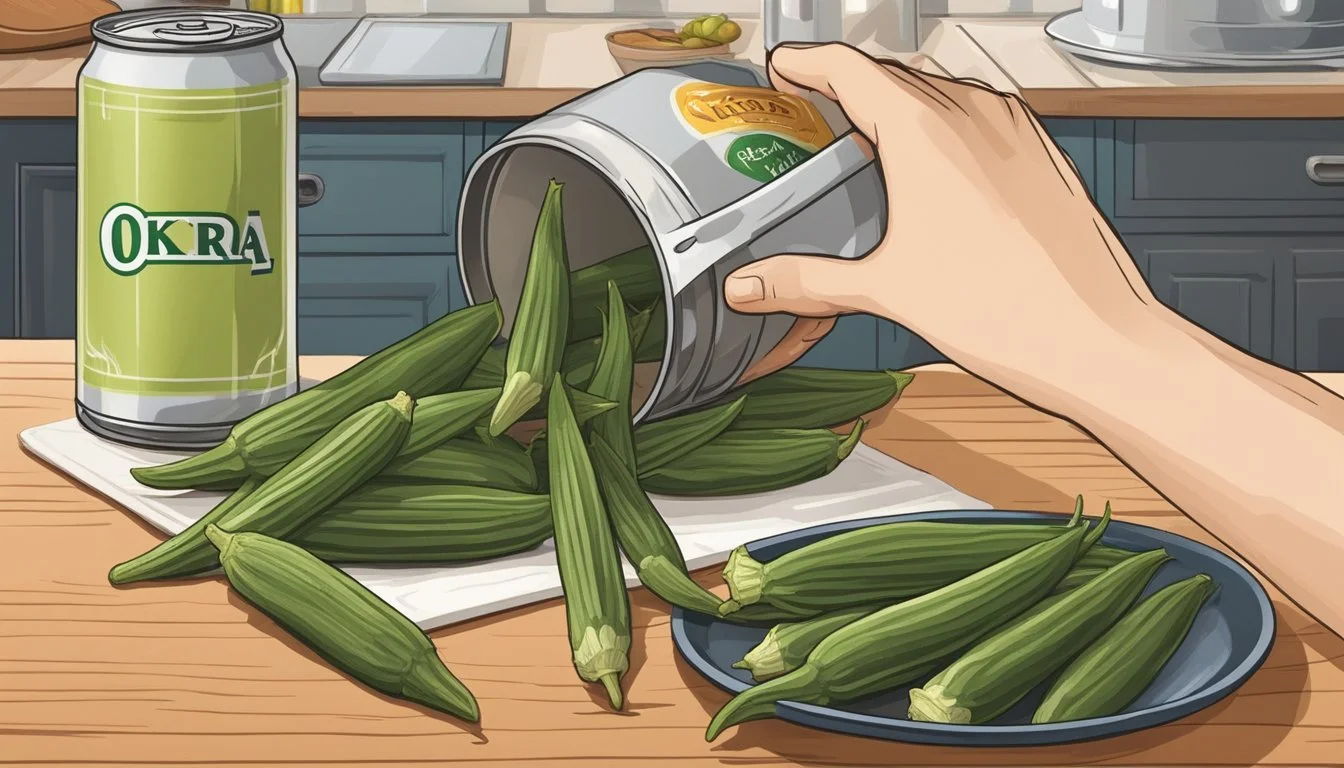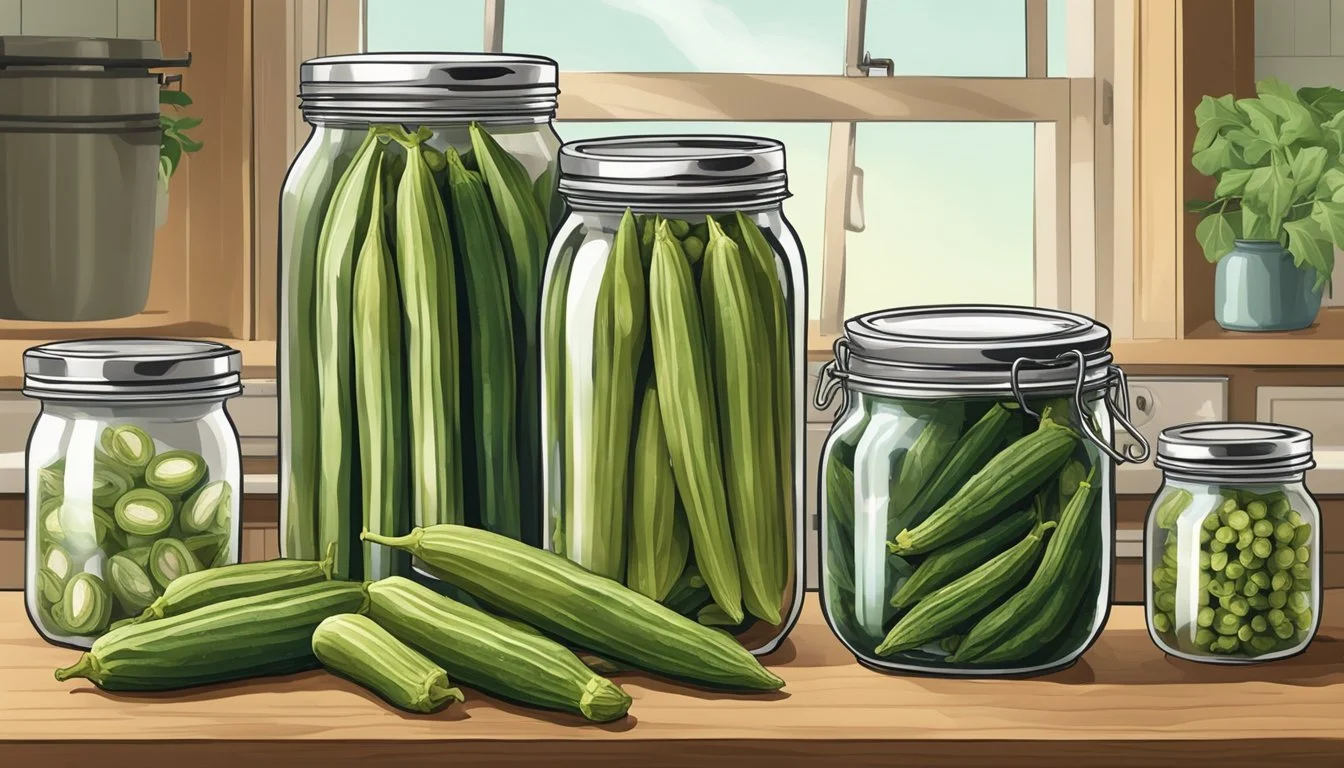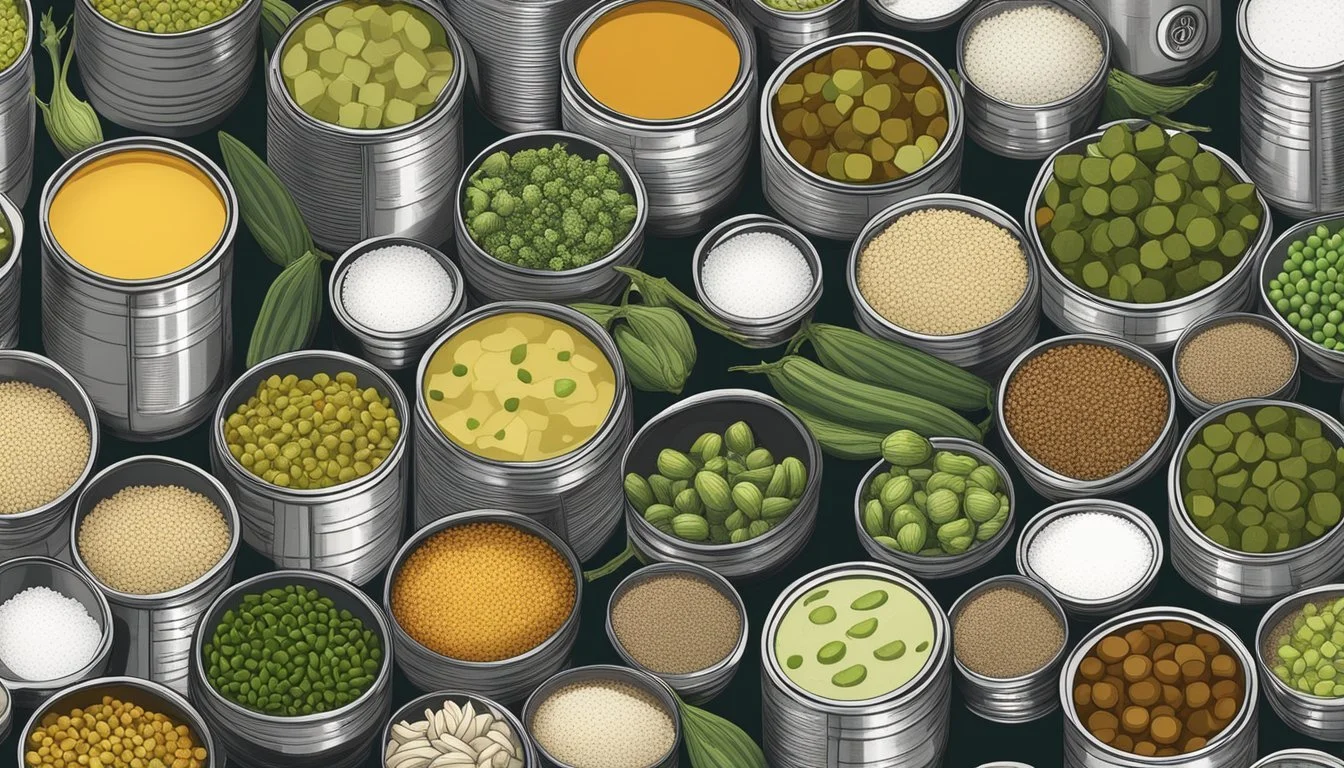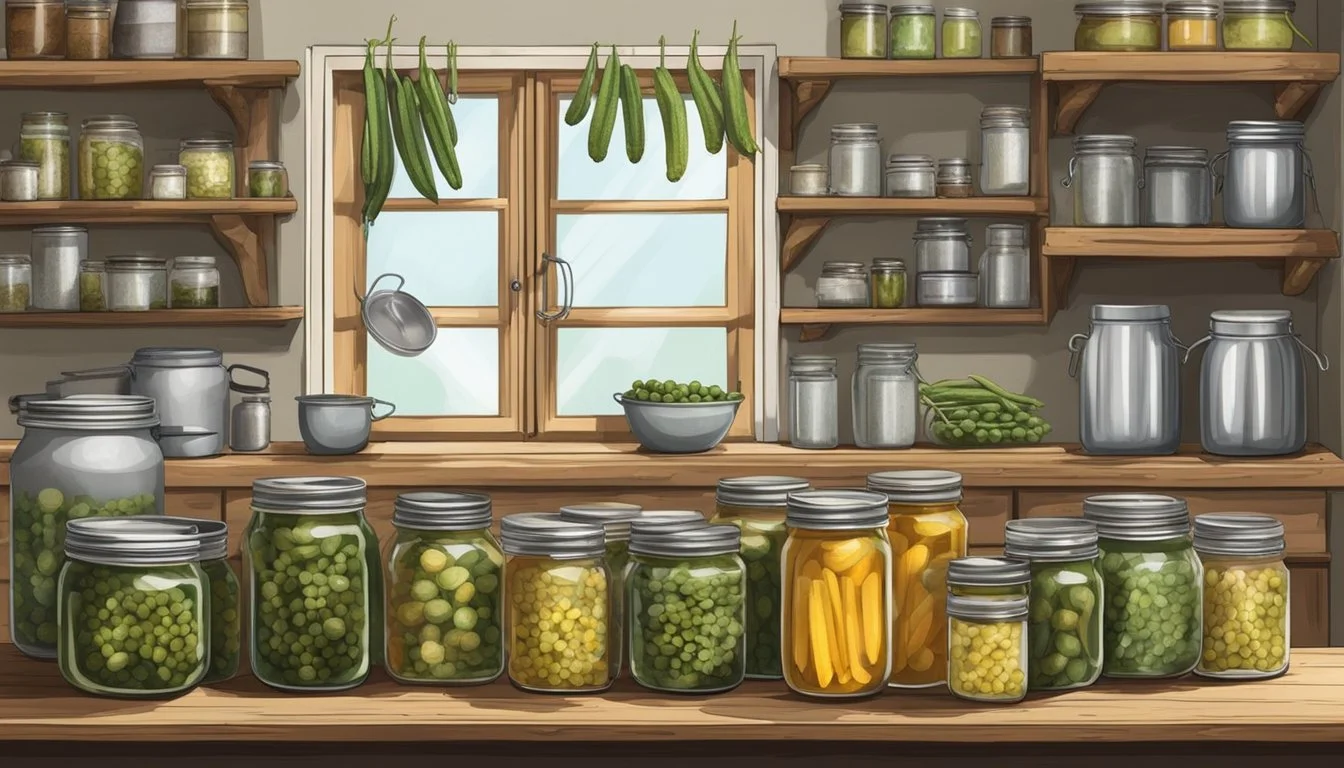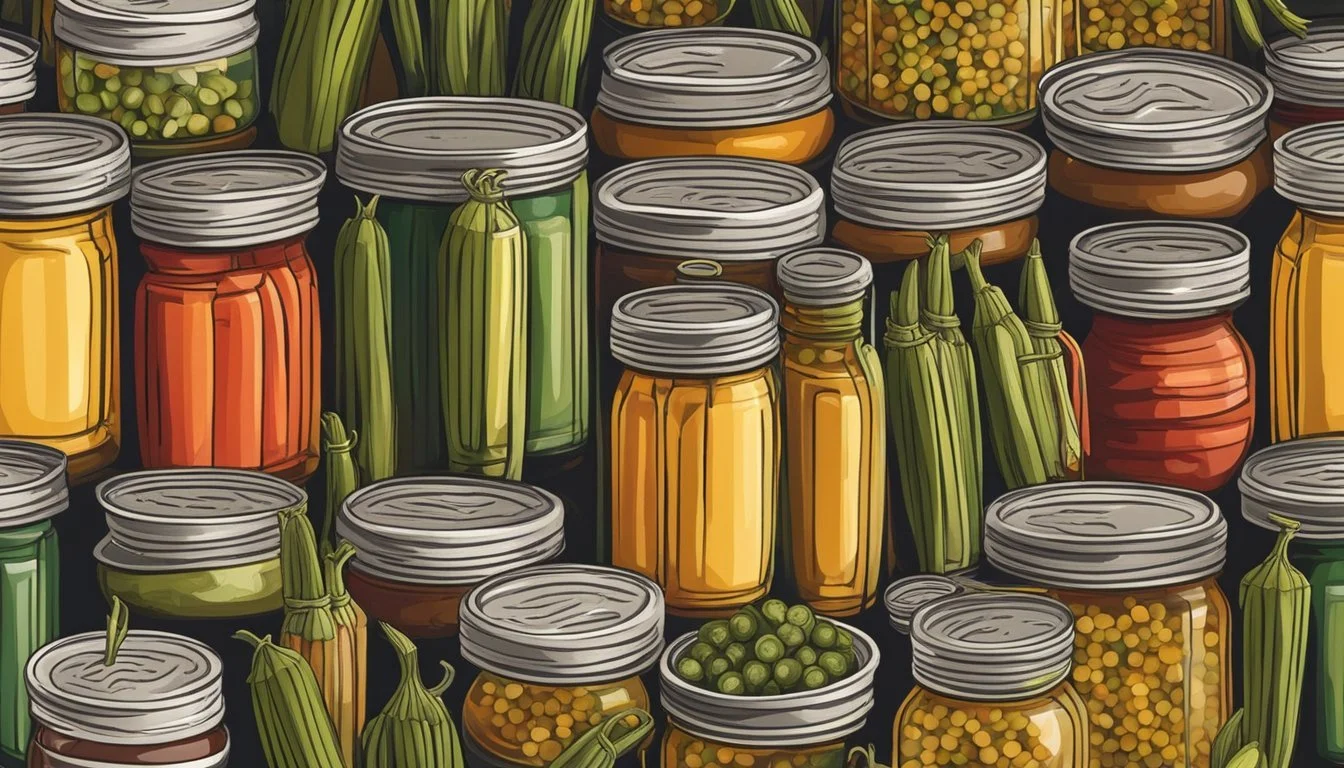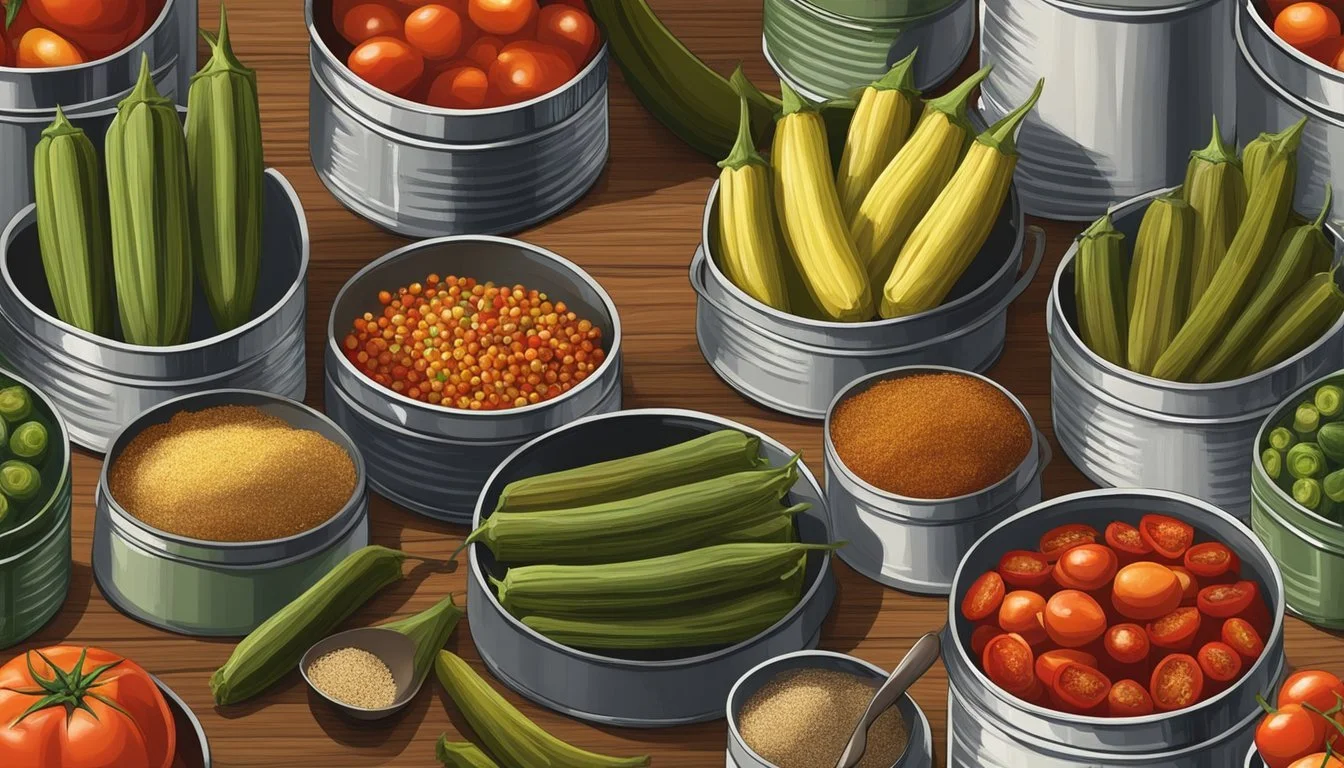Canned Okra Recipes for Southern Charm
Easy and Delicious Comfort Foods
Okra, a staple in Southern cuisine, is a versatile vegetable known for its distinct texture and subtle flavor. Its ability to be preserved through canning has made it a year-round addition to many kitchens across the South and beyond. Canned okra offers the convenience of having this beloved vegetable on hand, ready to be transformed into a variety of dishes that evoke Southern charm—each recipe carrying the essence of home-cooked comfort.
With food preservation techniques well-rooted in Southern cooking traditions, canned okra allows for a taste of summer's bounty even in the colder months. The process of canning locks in flavor and ensures that okra can be enjoyed long after its season has passed. While some may shy away from its unique mucilaginous texture when fresh, this characteristic is less pronounced in canned okra, making it an excellent ingredient for stews (What wine goes well with stews?), gumbos, and side dishes.
Transforming canned okra into a savory delight requires little more than an understanding of its flavor profile and a touch of creativity. Infusing canned okra with aromatic spices, herbs, or a splash of acidity, such as lemon juice, can enhance its taste, bridging the gap between convenience and the homemade goodness of traditional Southern cooking. The result is an array of recipes that range from quintessentially Southern to modern interpretations, all showcasing the charm of this treasured Southern ingredient.
Selecting and Preparing Okra
Selecting the right okra is essential for any recipe, and proper preparation is crucial to ensure the best texture and flavor. Here's how to choose and get okra ready for cooking.
Identifying Fresh Okra
When selecting fresh okra, look for pods that are small to medium-sized, as they are typically more tender and less fibrous than larger ones. The ideal length is about 2 to 4 inches. Pods should be bright green, free from blemishes or brown spots, and should feel firm yet yield slightly under pressure. Young, tender pods will snap easily, a good indicator of freshness.
Pre-Cleaning and Trimming
Before cooking, okra should be thoroughly washed in cold water. Ensure to pat it dry to remove any excess moisture. Trimming is straightforward:
Trim the stem end just before the ridge at the top, but do not cut into the pod.
Leave the cap intact if desired, as it is edible and helps hold the shape when cooking.
For recipes requiring halved or sliced okra, cut it crosswise after trimming the ends.
Pre-Blanching Okra
Blanching okra can reduce its natural sliminess and make it more palatable, especially if it is to be frozen or used in certain dishes like gumbo or stews. Here's how to blanch okra:
Boil a pot of water and add the cleaned okra.
Let it boil for 2-3 minutes; young okra may require less time to remain tender.
Immediately transfer the okra to an ice-water bath to stop the cooking process.
Drain well before using or freezing the okra.
Blanched okra can be stored in the refrigerator for a couple of days or frozen in a single layer before transferring to a freezer-safe container.
Canning Basics
Successful home canning is grounded in understanding the importance of sterilization, proper equipment, and the water bath canning method. These foundational steps ensure the safety and quality of canned goods like okra.
Understanding Water Bath Canning
Water bath canning is a safe method for preserving high-acid foods. The process involves submerging filled canning jars in boiling water for a set period. This kills harmful bacteria and creates a vacuum seal, vital for preserving the food. A water bath canner is typically used, which is essentially a large, deep pot with a rack at the bottom to elevate the jars off the direct heat.
Sterilizing Jars and Lids
Before canning any food, it's crucial to sterilize the jars and lids to eliminate any bacteria, yeasts, or fungi. Sterilization can be done by boiling the jars and lids for 10 minutes, increasing the time for higher altitudes. Jars should be handled with a jar lifter to prevent contamination and ensure safety. After sterilizing, jars and lids should be kept hot until they are filled to prevent them from breaking when adding hot food.
Canning Equipment Essentials
To begin canning, one needs the right equipment for efficient and safe food preservation. Essential canning supplies include:
Canning Jars: Pint canning jars are commonly used for smaller portions like pickled okra.
Lids and Bands: The lids seal the jars, and bands secure the lids during processing. They must be fitted correctly to ensure a proper seal.
Water Bath Canner: A large pot with a lid and a rack to process jars submerged in boiling water.
Jar Lifter: A tool designed to safely lift hot jars out of boiling water.
Canning Funnel: Helps in filling jars cleanly and efficiently.
By using the proper equipment and following canning basics, one can ensure their canned okra remains safe and retains Southern charm.
Brine and Seasoning Mixes
The art of pickling okra in the South revolves around perfecting the brine and seasoning mixes, ensuring each jar is filled with a balance of tang, sweetness, and spice.
Traditional Southern Brine
A classic Traditional Southern Brine consists of a simple mixture of water and vinegar, often white vinegar for its clean, sharp taste, or apple cider vinegar for a milder tang. To each quart of brine, they would typically add:
1 cup of vinegar (white or apple cider)
1 cup of water
1 tablespoon of canning or pickling salt
Sugar can be added for a hint of sweetness, usually about a teaspoon per quart of brine. Traditional spices like dill seeds and peppercorns are often included to infuse the okra with familiar flavors of the South.
Spicy Variations
Those who prefer a Spicy Variation in their pickling include a kick to their brine. Starting with the traditional base, they might add:
1 teaspoon of crushed red pepper flakes per quart of brine
A few slices of fresh jalapeño or habanero peppers
A generous pinch of paprika for color and warmth
This spicy concoction not only adds heat but also a depth of flavor that elevates the pickled okra from simple to sensational.
Creative Flavor Combinations
Venturing beyond the traditional, Creative Flavor Combinations offer a unique twist to pickled okra. Infusions might include:
A blend of cider vinegar and lemon juice for a citrusy note
Seasonings such as garlic cloves, mustard seeds, or coriander for an aromatic edge
A mixture of sugar and spices like cinnamon or cloves for an unexpected sweet and spicy profile
Chefs and home cooks alike experiment with different vinegars, spices, and seasonings to create a signature okra pickle that stands out at the Southern table.
Advanced Canning Techniques
Mastering advanced canning techniques ensures that home-canned okra maintains its Southern charm while addressing common issues such as texture and safety. Attention to detail can make all the difference in achieving the perfect canned okra.
Managing Slimy Texture
One of the main concerns with canning okra is its tendency to develop a slimy texture, which is off-putting for many. To combat this, okra should be handled gently and rinsed under cool running water prior to canning. The addition of acids like vinegar can help cut through the sliminess. Ensuring jars are packed while the okra is still cool and never boiling the vegetable prior to canning can also help maintain a desirable texture.
Ensuring Safe Seals
A crucial step in canning is ensuring safe seals to prevent food spoilage. When filling jars, it’s important to:
Leave recommended headspace to allow for expansion.
Eliminate air bubbles by gently tapping the jars or using a non-metallic tool to release trapped air.
Wipe the rims clean before applying the lids to ensure a tight seal.
Process the jars in a boiling water bath for the time recommended in a trusted recipe to properly sterilize and seal them.
Storing for Shelf Life
Proper storage is key to extending the shelf life of canned okra. Jars should be stored in a cool, dark place such as a pantry to prevent degradation of the food inside. Avoid areas where extreme temperature changes occur, as this can compromise the seals. Check for signs of spoilage before use, and consume any jars with questionable seals immediately, storing leftovers in the refrigerator.
Serving and Using Canned Okra
Canned okra is a staple in Southern cuisine, valued for its convenience and versatility. It is easily adapted to a range of dishes from classic stews to crunchy fried sides, enriching meals with its fiber content and unique texture.
Soups and Stews
Canned okra seamlessly integrates into soups and stews such as the quintessential Southern gumbo. Its gelatinous nature contributes to thickening the broth and adding substance. Here’s how to incorporate it:
Gumbo: Add canned okra in the last 10-15 minutes of cooking to maintain its texture.
Creole Stews: Combine with ingredients like bell pepper, rice, and hot peppers for a heartening meal.
Fried and Roasted Okra Dishes
For a crunchy texture, okra can be pan-fried or roasted. Coating okra with cornmeal before frying creates a delectable crust. Here's a simple guide:
Pan-Fried Okra: Toss okra in cornmeal and spices; fry until golden.
Grilled Okra: (What wine goes well with grilled okra?) Season and grill for a charred, smokey flavor.
Roasted Okra: Lightly coat with oil, season, and roast until crisp.
Pickled Okra as Condiments and Garnish
Pickled okra elevates the role of this vegetable as a condiment or garnish on sandwiches and more. To make homemade pickled okra:
Sterilize jars and prepare a vinegar brine with spices like garlic cloves and peppercorns.
Pack the okra into jars and cover with the brine.
Use the refrigerator method for preserving if not canning.
Suggestion: Serve pickled okra alongside Southern dishes as a tangy counterpoint.
Okra in World Cuisine
As okra traverses continents, its culinary applications exhibit incredible variety, evolving from the Indian subcontinent's spicy treats to the heart of Cajun cooking in the American South.
Exploring Okra Dishes from India
In India, okra is known as "bhindi" and stars in several regional dishes. Bhindi masala features okra sautéed with an array of spices, including garam masala, turmeric, and cumin, while in the South, okra is often cooked in a tangy tamarind sauce or fried to a crisp texture.
Shrimp and Okra Gumbo: A Cajun Take
Shrimp and Okra Gumbo embodies the soul of Cajun cuisine. Originating from Louisiana, this stew is rich with the flavors of the Holy Trinity (onion, celery, and bell peppers), thickened with a dark roux, and given a distinctive taste with a combination of okra and shrimp.
Okra as a Global Ingredient
Okra's adaptability is evident worldwide. Across Africa, the Middle East, and parts of Asia, okra appears in soups and stews, contributing its thickening properties and ability to absorb flavors. Its ease of cultivation and nutritional benefits make it a valued ingredient internationally.
Health Benefits and Nutrition
Canned okra offers a wealth of health benefits due to its rich nutritional profile, notably its dietary fiber, antioxidants, and essential vitamins which are integral to a well-rounded diet.
Dietary Fiber in Okra
Okra is a significant source of dietary fiber, both soluble and insoluble. A half-cup serving of cooked okra provides around 2 grams of fiber, which is crucial for maintaining healthy digestive function. The fiber in okra helps to regulate blood sugar levels by slowing down the absorption of sugar in the intestines.
Antioxidants and Vitamins
Packed with antioxidants, okra aids in reducing oxidative stress in the body. It is also an excellent source of:
Vitamin C: A powerful antioxidant, critical for immune function and skin health. One cup of okra may contain up to 40% of the daily recommended intake.
Vitamin K: Essential for blood clotting and bone health.
Vitamin A: For maintaining good vision and healthy skin.
Folate: important for cell division and is recommended during pregnancy to help prevent congenital disabilities.
These vitamins and antioxidants in okra help protect against chronic diseases and support overall health.
Okra in Healthy Diets
Okra fits well into healthy diets, as it is low in calories and has a high nutritional value. Because of its nutrient density, it supports various dietary needs from weight management to blood sugar control. Okra can be a valuable part of a balanced diet that supports heart health and overall wellness.
Creative Ideas for Okra Leftovers
Canned okra leftovers offer a versatile opportunity to infuse Southern charm into everyday meals. They can be transformed into refreshing additions to salads and charcuterie (What wine goes well with charcuterie?) boards or become the surprise ingredient in hearty sandwiches and burgers.
Okra in Salads and Charcuterie Boards
One can enliven salads by adding slices of pickled okra for a tangy and crunchy element. They complement both the texture and the acidity of vinaigrette dressings. Here is a simple way to integrate okra into a Garden Salad:
Mixed greens (lettuce, spinach, arugula)
Cherry tomatoes
Pickled okra slices
Your choice of dressing, preferably a light vinaigrette
For charcuterie boards, okra can serve as both a flavorful and aesthetic component. Pickled okra, with its vibrant green hue, adds a pop of color and a pleasant zesty taste that pairs wonderfully with various cheeses and cured meats (What wine goes well with cured meats?). Arranging them symmetrically on a board alongside other staples enhances the overall presentation.
Innovative Okra Sandwiches and Burgers
Transforming a simple burger or sandwich with okra is an ingenious way to integrate this Southern staple. It can be done as follows:
Add fried okra as a topping on burgers for an intriguing texture.
Use pickled okra as a garnish in place of pickles for a Southern twist in sandwiches.
For example, consider this Okra Burger setup:
Start with a toasted burger bun.
Layer on your preferred patty (beef, chicken, or a vegetarian option).
Add a slice of sharp cheddar cheese.
Top with fried okra pieces for a satisfying crunch.
Conclusion: The Joy of Home Canning
Home canning provides an excellent method for preserving the southern charm of okra beyond its season. By canning, enthusiasts preserve the freshness and crunch of this quintessential southern veggie for months to come. It ensures that the okra remains a staple in the pantry, ready to be enjoyed in a myriad of ways.
When one cans okra at home, they retain control over the ingredients and the process. Traditionally, to each jar, a mixture of vinegar, water, and spices such as garlic, dill seeds, and peppercorns is added to enhance the okra's flavor. Canners take care to pack the jars judiciously, ensuring the okra is snug yet not crushed, as this maintains the vegetable's integrity.
Home Canning Process:
Sterilization: Sterilize jars in boiling water.
Packing: Arrange okra and spices in jars, leaving adequate headspace.
Sealing: Pour hot brine over okra and seal jars with airtight lids.
Preservation: Process in a boiling water bath or pressure canner.
The process of home canning, especially with the use of a water bath or pressure canner, is critical for food safety. It eliminates harmful bacteria and seals the goodness inside. Maintaining a boiling water bath for proper timing is a step they never skip.
Home canning is more than just a preservation technique; it’s a tradition. It ties individuals to their heritage and brings a sense of accomplishment. There’s great satisfaction in seeing rows of canned okra lining the shelves, ready to bring a touch of summer to meals all year round. It is a labor of love that ensures the bounty of the garden is never wasted and Southern culinary traditions continue to thrive.


